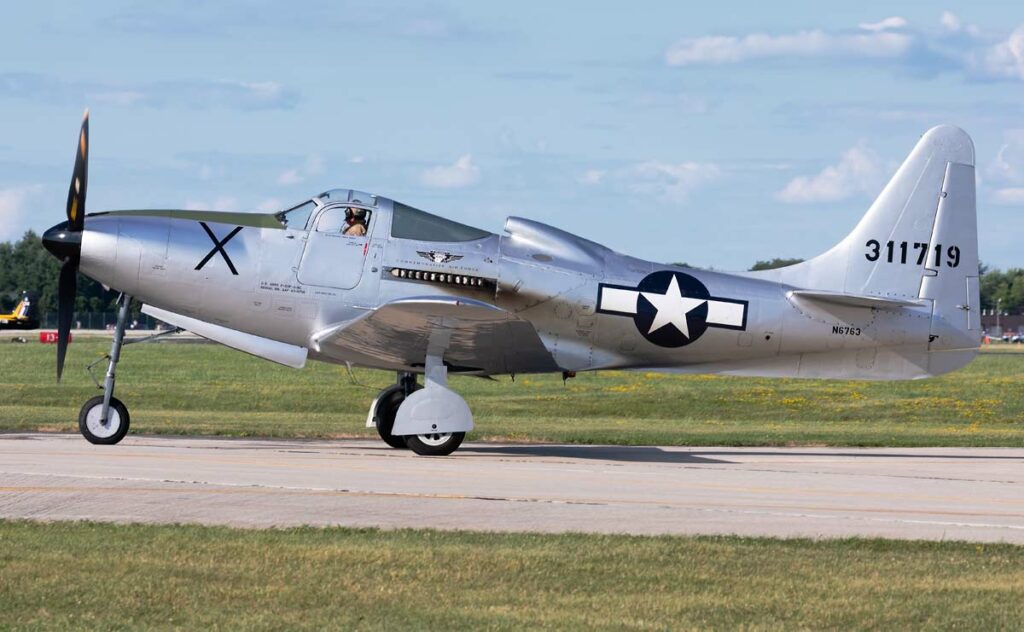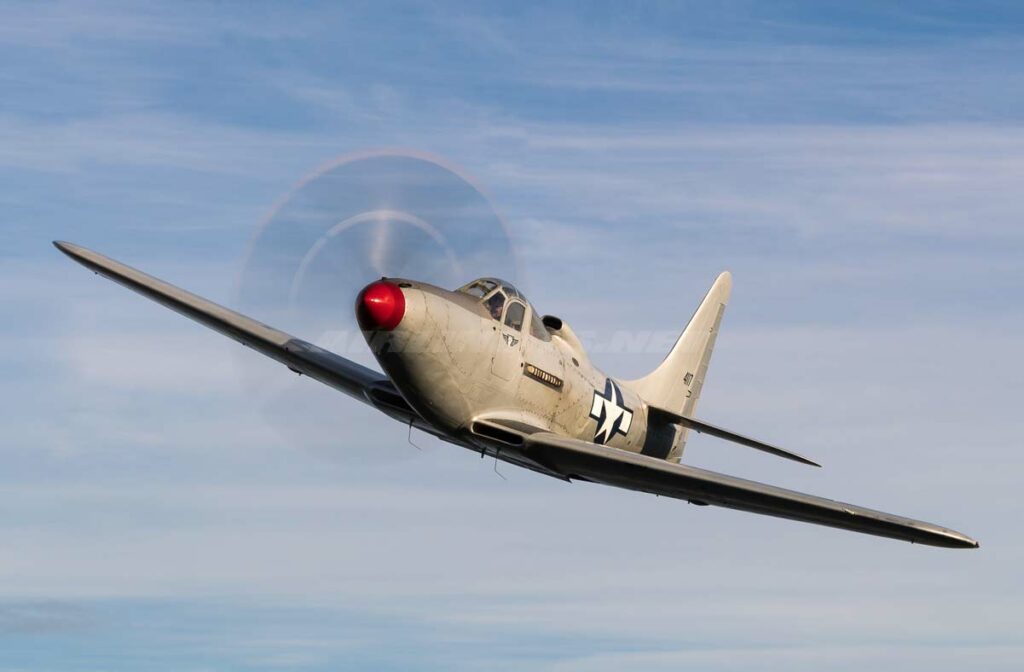The Bell P-63 Kingcobra, an American WWII fighter, featured an innovative design and powerful armament, excelling in high-altitude combat.
This article provides a comprehensive overview of the Bell P-63 Kingcobra, a WWII American fighter aircraft. It discusses the historical context of its development, focusing on the need for a high-performance fighter in the WWII era and the objectives behind its creation. The P-63’s design, marked by unique features and technical specifications, is analyzed in detail, highlighting its advantages and limitations. The article also evaluates the aircraft’s performance, including engine specifications, speed, altitude, and range, comparing it to contemporary fighters. The military use of the P-63 in various conflicts is explored, detailing its armament, combat roles, operational successes, and the contexts in which it was used. The conclusion reflects on the P-63 Kingcobra’s place in aviation history and its impact on fighter aircraft design.
The Bell P-63 Kingcobra, a successor to the P-39 Airacobra, represents an important chapter in WWII aviation history. Designed as a high-altitude fighter, the P-63 was developed to address the evolving demands of aerial combat. This article examines the development, design, performance, and military application of the P-63, highlighting its significance in the era of piston-engine fighters.

History of the Development of the Bell P-63 Kingcobra:
During WWII, the rapidly changing landscape of air combat necessitated the development of more capable fighter aircraft. The Bell P-63 Kingcobra was developed by Bell Aircraft Corporation, following the limited success of its predecessor, the P-39 Airacobra. The objective was to create a fighter with improved high-altitude performance, enhanced armament, and better handling characteristics.
The P-63 program was launched in response to the need for American fighters that could effectively engage enemy aircraft at higher altitudes, a domain increasingly dominated by advanced German and Japanese fighters. The project, led by a team of skilled engineers at Bell, sought to rectify the shortcomings of the P-39 while introducing several innovations.
The Kingcobra first flew in December 1942, marking a significant advancement in American fighter design. However, it did not receive a specific NATO nickname, as it was primarily used during the WWII era, before the formation of NATO.
Design of the Bell P-63 Kingcobra:
The Bell P-63 Kingcobra’s design was a blend of evolutionary improvements and new features. It had a length of 10.1 meters (33 feet) and a wingspan of 11.7 meters (38.4 feet). The aircraft was constructed primarily from metal, featuring a tricycle landing gear and a distinctive mid-fuselage engine placement.
The P-63 was equipped with a powerful Allison V-1710 liquid-cooled engine, which provided better high-altitude performance compared to the P-39. It also featured an aerodynamically refined fuselage and a laminar-flow wing, which enhanced its speed and agility.
One of the standout features of the P-63 was its armament. It was armed with a 37mm cannon firing through the propeller hub and four .50 caliber machine guns. This heavy armament made it formidable in air-to-air combat, though it added to the aircraft’s weight, affecting its maneuverability.
Performance of the Bell P-63 Kingcobra:
The P-63 Kingcobra’s Allison V-1710 engine delivered approximately 1,325 horsepower, enabling a top speed of about 660 km/h (410 mph) and a service ceiling of 13,000 meters (43,000 feet). Its range was approximately 725 kilometers (450 miles), allowing for extended combat operations.
Compared to its contemporaries like the P-51 Mustang and the F6F Hellcat, the P-63 was competitive in terms of speed and altitude performance. However, it was generally regarded as less effective in dogfighting agility and long-range escort missions.

Military Use and Combat of the Bell P-63 Kingcobra:
The P-63 Kingcobra saw limited combat with the U.S. forces but was extensively used by the Soviet Union under Lend-Lease agreements. It was primarily deployed in the air defense role and as a ground-attack aircraft on the Eastern Front.
The Kingcobra competed with various German and Japanese aircraft, proving effective in intercepting bombers and engaging in ground-attack missions. Its heavy armament was particularly useful in these roles.
Post-WWII, the P-63 was phased out of U.S. service and replaced by more advanced jet fighters. However, it continued to see service in the Soviet Union and other countries for several years.
The Bell P-63 Kingcobra, though overshadowed by more famous contemporaries, played a noteworthy role in WWII aviation. Its development highlighted the ongoing quest for superior high-altitude performance and firepower in fighter aircraft. In combat, the P-63 demonstrated its capabilities as a versatile and powerful aircraft, particularly in the hands of Soviet pilots. Its legacy in the evolution of fighter aircraft design and its contribution to the air war on the Eastern Front cement its place in aviation history.
Back to the Warbirds section.